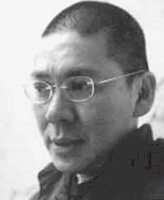
The gallery provided him with all he needed, including use of the Louvre as a location. This new approach began in 2007 when Tsai was commissioned by the Louvre to make a film after he had finished his feature I Don’t Want To Sleep Alone (2007).

He is now as likely to fund and distribute his work through the art world as through conventional theatrical film routes. In an era where filmgoers debate the convergence of the theatrical feature film with small- screen broadcast and streaming services, Tsai has gone in a contrary direction and sought a convergence between the theatrical feature with the art gallery. In short, he has prioritized sensation over narrative.Ĭonsidering Tsai’s foregrounding of painterly values over those of a dramatist, it is perhaps no surprise that his work is now as likely to be seen in an art gallery as a cinema. Where Tsai has subtracted plot and characterization, he has added striking compositions and rich color schemes. The stylization comes from the skilled artistry with which each shot is beautifully composed and the dazzling color scheme of vibrant reds, golden sunlight, and deep blacks which are featured. The reality comes from the way that Tsai is open to capturing everything that naturally unfolds in the location while the monk walks through the frame. Tsai’s treatment encourages the sympathetic viewer to contemplate both the reality of the moment and also the artistry of the composition. No plot development links the shots, apart from the continuation of the walk. Little happens in each (long) shot, apart from the monk’s very slow progress through the city.

#TSAI MING LIANG SERIES#
His mise en scène often feels more like a dance of movement and color than a conventional drama, leaving us more hypnotized than emotionally engaged.įor example, his 2014 film Journey to the West (one of seven films in the “walker” series) is constructed from a series of long shots of a monk walking through a variety of locations in Marseille (or it could be viewed as actor Lee Kang-sheng dressed as a monk-one of Tsai’s trademarks is a paradoxical mix of vérité observation and heightened mise en scène that makes both interpretations valid). Tsai does not attempt to hold his audience’s attention through the standard techniques of emotional manipulation. More fundamentally, that distancing effect comes from his minimalist approach, which eschews plot, dialogue, music score, and expressive acting. The distance can be literal, since he tends to balance his propensity for close shots with extreme wide shots that are held for a long time. Yet, despite this big-hearted empathy, he remains a distanced observer. Tsai is unafraid of using the sentimental torch songs of popular culture to convey a sensation of romantic yearning.

Furthermore, those foibles are observed with empathy for those who are alone and unable to connect with the wider world.

Tsai’s films are filled with moments of humorous observation of the foibles (and absurdity) of humanity. That is not to say that he is some po-faced aesthetic. Indeed, beginning with the release of his first cinematic feature, Rebels of a Neon God (1992), Tsai’s career can be viewed as a continual move away from the imperatives of commercial cinema. He has also displayed increasingly less interest in characterization, while the pace of his films has become slower. In his introduction to an interview with Tsai Ming-liang in the Fall 2004 edition of Cineaste, Jared Rapfogel notes that in Tsai’s latest release at the time, Goodbye, Dragon Inn, “the narrative element falls away almost entirely.” In the fifteen years since that interview, the “falling away of narrative” in Tsai’s work has steadily continued.


 0 kommentar(er)
0 kommentar(er)
